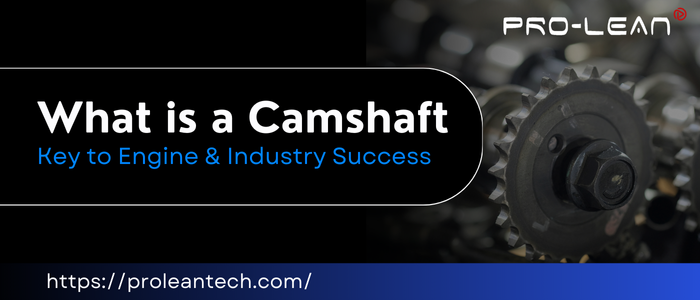
The camshaft is a crucial component in a combustion engine. Its strategically aligned lobes, also called “Cams, ” are directly responsible for controlling the movement of the intake and exhaust valves.
Camshafts are directly responsible for the smooth working of the engines, or you can say that they are responsible for the system’s breathing. Cams move the valves up and down.
Camshafts work this way when the valves open to let the air into the engine system. It gives the hydraulic pressure on the valves, and when the closure of the system is needed, it releases the pressure, and the valves move backward, stopping the movement of the air coming into the system.
Camshafts are usually primarily used in automotive engines. Still, they are also used in many other industries’ engines and are crucial for their work in the aerospace, marine, and defense industries.
At Proleantech, we also work with several small businesses, from the automotive to the aerospace industry. They need high-performance camshafts made with state-of-the-art CNC machinery, whether they need prototypes or other parts like camshafts.
We provide them top-notch services while fulfilling international precision and material durability standards. We also provide them with the overall parts by Optimize CNC machining cost for those parts made out using CNC technology.
What Are The Main Parts/Components Of A Camshaft System? Their Functions Defined
The main parts or components of a camshaft are defined and explained here. These are crucial to understanding so that we can further discuss types of camshafts and which type is crucial for your industry success with the material selection guide. So don’t miss out on this premium data information:
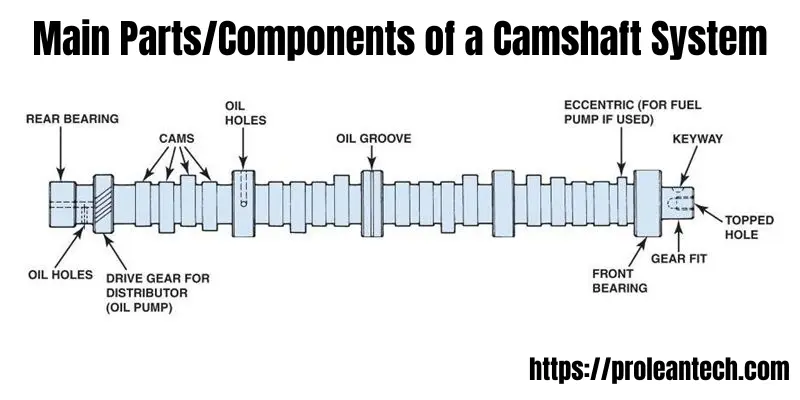
Diagram of a camshaft
1: Cam
The camshaft’s central and most important part is responsible for opening & closing the valve.
2: Cam Follower
This is the component that follows the cam movement. As the cam rotates, the cam follower is also pushed to operate the valves. In short, it is responsible for translating the cam’s action into valve movement.
3: Shaft
While the combustion engine is on the shaft, it is responsible for bearing stressful loads while the combustion engine is running and for supporting camshaft components by binding other parts.
4: Drive Shaft
The drive shaft connects the camshaft with the crankshaft by transferring power through a timing belt or chain. By this, the working of the crankshaft with the camshaft becomes possible by maintaining symmetry.
5: Lobes
Lobes are just like pear-shaped discs attached to camshafts that are responsible for pressing the valves, which ultimately gives them reciprocating motion to help them open and close for the engine.
6: Bearings
Bearings are responsible for keeping the shafts in their proper place and also helping the shaft reduce friction. Bearings also have a unique way of replacing the oil within a camshaft.
7: Chain Sprocket
It has a connection with the camshaft on one side and with the timing belt and sprocket on the other end, and it is responsible for keeping the synchronization of timing between the camshaft and crankshaft.
8: Thrust Plate
It is located in Between the timing gear & cam, minted on the front cover.
Try Prolean Now!
Working Principle Of A Camshaft
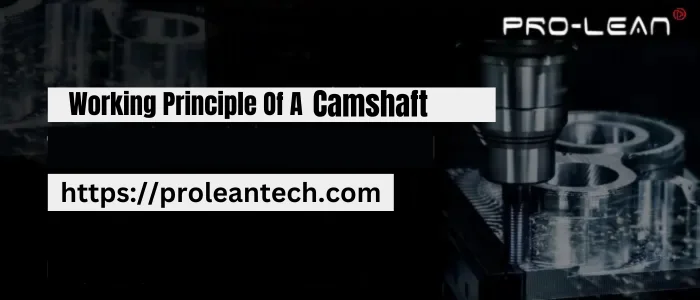
Camshaft Working Principle
The working principle of the camshaft is based on converting the rotating motion into a reciprocating motion that ensures the opening and closing of the engine’s inlet and exhaust valves.
——————————————————————————————————————————-
Also Read: Discover our expert guide to custom automotive parts manufacturing for precision and performance tailored to your needs.
Types of Camshafts: Which One Is Right for Your Business?
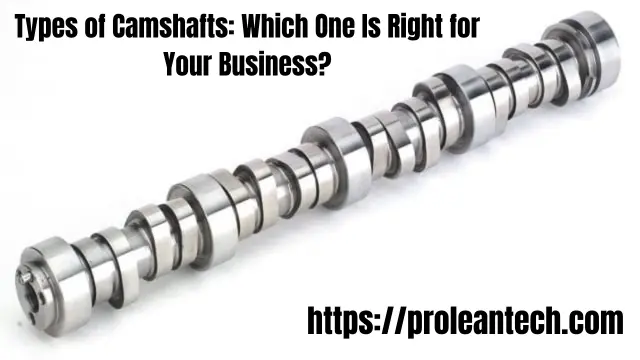
Camshafts Types
It does not matter whether you belong to which business; ProleanTech can provide the best information & guide you about the camshaft types used in different engines for smoother processes & also what is the right choice for your industry needs and ultimate success.
We can help you find the best type of camshaft and explain each part in detail so you can choose the material wisely and invest your money in the right place.
1: Double Overhead Camshafts (DOHC)
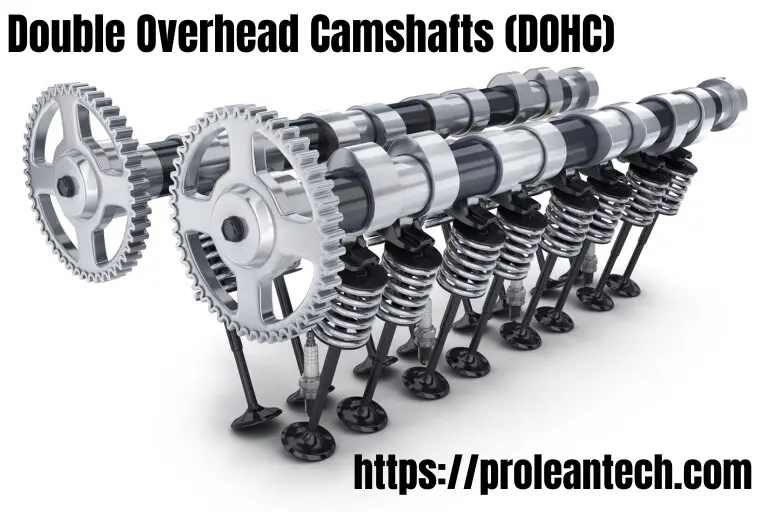
Double Overhead Camshafts
The name suggests that the camshafts are used twice in one cylinder of the engine. Ultimately, they ensure the high performance of the automotive engine or the equipment for which it is being used.
Higher efficiency also allows for a higher rate of air intake and exhaust from the engine, which allows for high efficiency in the shortest time.
These engines can be used for your industry if you want the camshaft to be used in the engine, which needs higher efficiency and more power for smooth working like sports cars, motorcycles that need high speed, engines that need high rpm with durability and smoothness.
2: Roller Camshafts
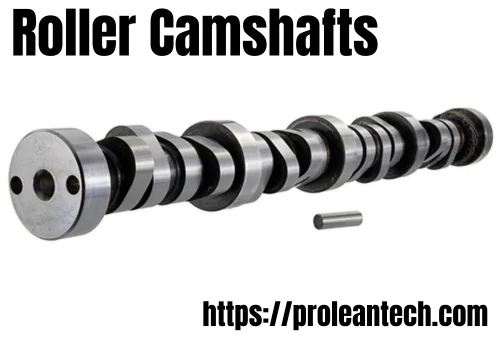
Roller Camshafts
Roller Camshafts are those shafts that use lifters with roller bearings and are rolled against the lobes/cams to open the valve at the higher lift for a long time. These are the camshafts that are often compared with the flat tappet camshafts that use the lifters and rub against the lobs/cams.
Roller camshafts have higher work efficiency than flat tappet camshafts and have a longer life rate with higher efficiency in smooth working, resulting in fewer chances of failure.
You can use these roller camshafts in the engines for your customers by ordering from ProleanTech because we use CNC machining technology with up to 5-axis technology, which ensures your demand for higher efficiency of camshafts, longevity for engines like sports cars, racing motorcycles, and much more.
3: Flat-Tappet Camshafts
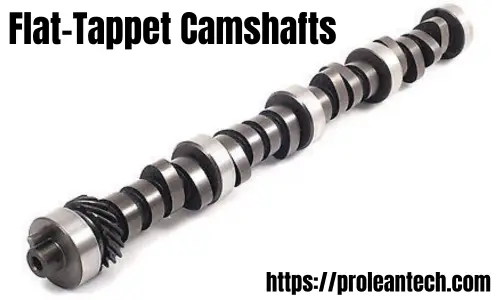
Flat-Tappet Camshafts
The flat tappet camshafts are those camshaft types with a flat base that rides on the cam/lobe and rotates around the lifter bore, which ensures the proper oiling and helps reduce the wear factor.
This is one the most common camshafts and has a flat surface on which the tappets or lifters are actually. These types of camshafts also need regular maintenance, which might include replacing the lifters or camshaft due to the wear factor.
You can use these camshafts in engines that need less performance, like old motorcycles, old trucks, classic cars, and many other engines.
4: Conjugate Camshafts
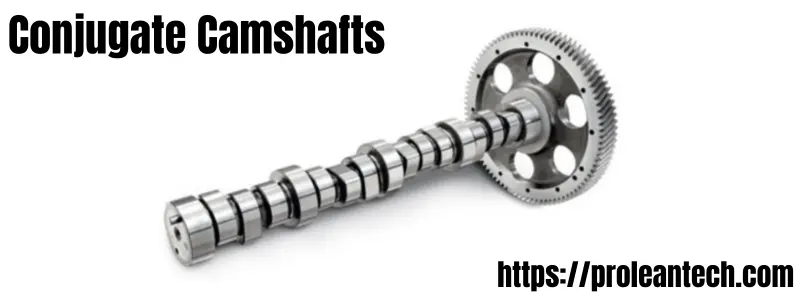
Conjugate Camshafts
This type of camshaft helps reduce the noise of the machining process in the industry. They have arrangements like two rollers connected with the cam follower or drive together that ultimately restrict the motion of the other parts.
These types of camshafts are less common than other types. You can use camshafts for the operation that needs more precision with the assurance of voice reduction.
5: Cylindrical Camshafts
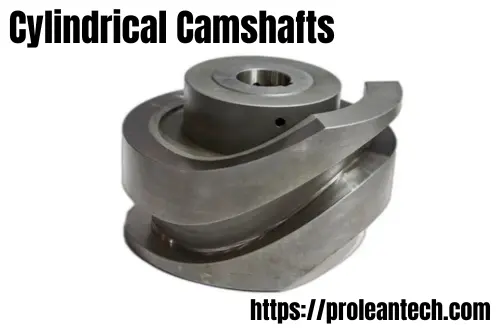
Cylindrical Camshafts
Cylindrical camshafts are significantly less common in modern industries, also known as drum or barrel shafts, and grooves on their surface to guide cam followers’ motion.
Cylindrical Camshafts are often found in the portion of the industry that needs specialized machinery for unique & specific purposes with the fulfillment of precision and continuous motion control.
6: Overhead Camshafts (OHC)
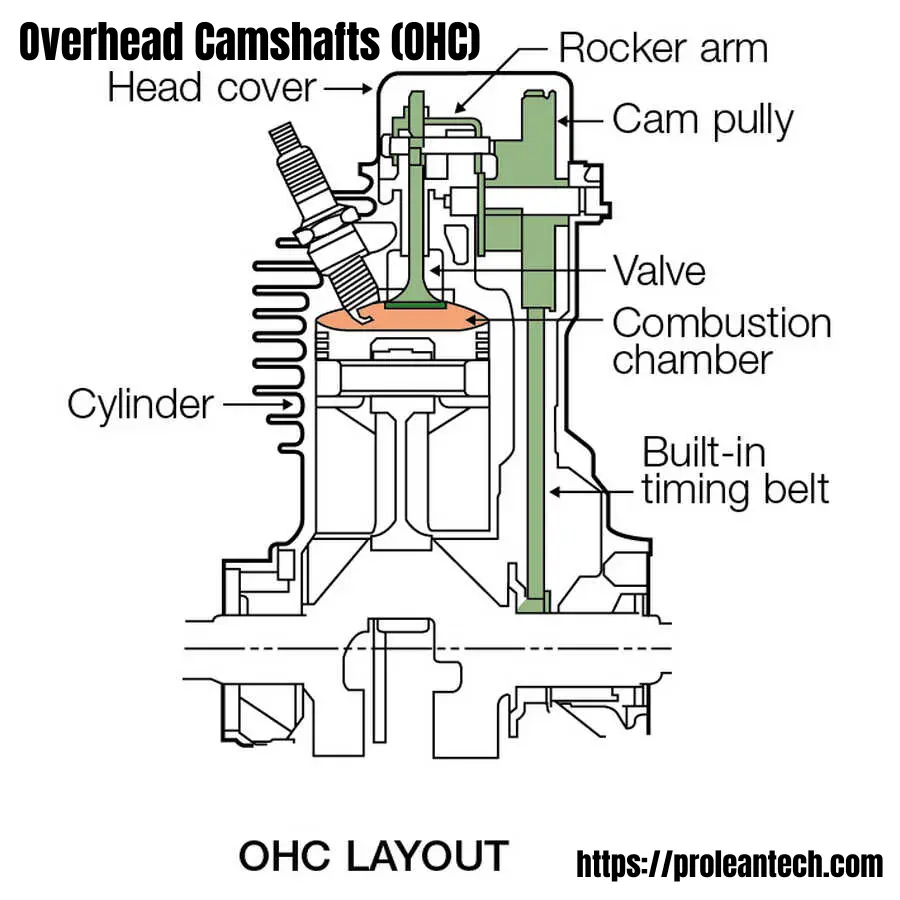
Overhead Camshafts (OHC)
Overhead Camshafts (OHC) are one of the common types of camshafts that provide higher performance by the working system in which the camshaft is positioned directly above the valves, and this factor eliminates the need for pushrods.
Because it provides the surety of high rpm and higher performance, it is one of the majorly used types of camshafts in the world, mainly used for the engines that require the features which are discussed before for OHC, like in modern cars, motorcycles, and in many other high-performance engines.
7: Performance Camshafts
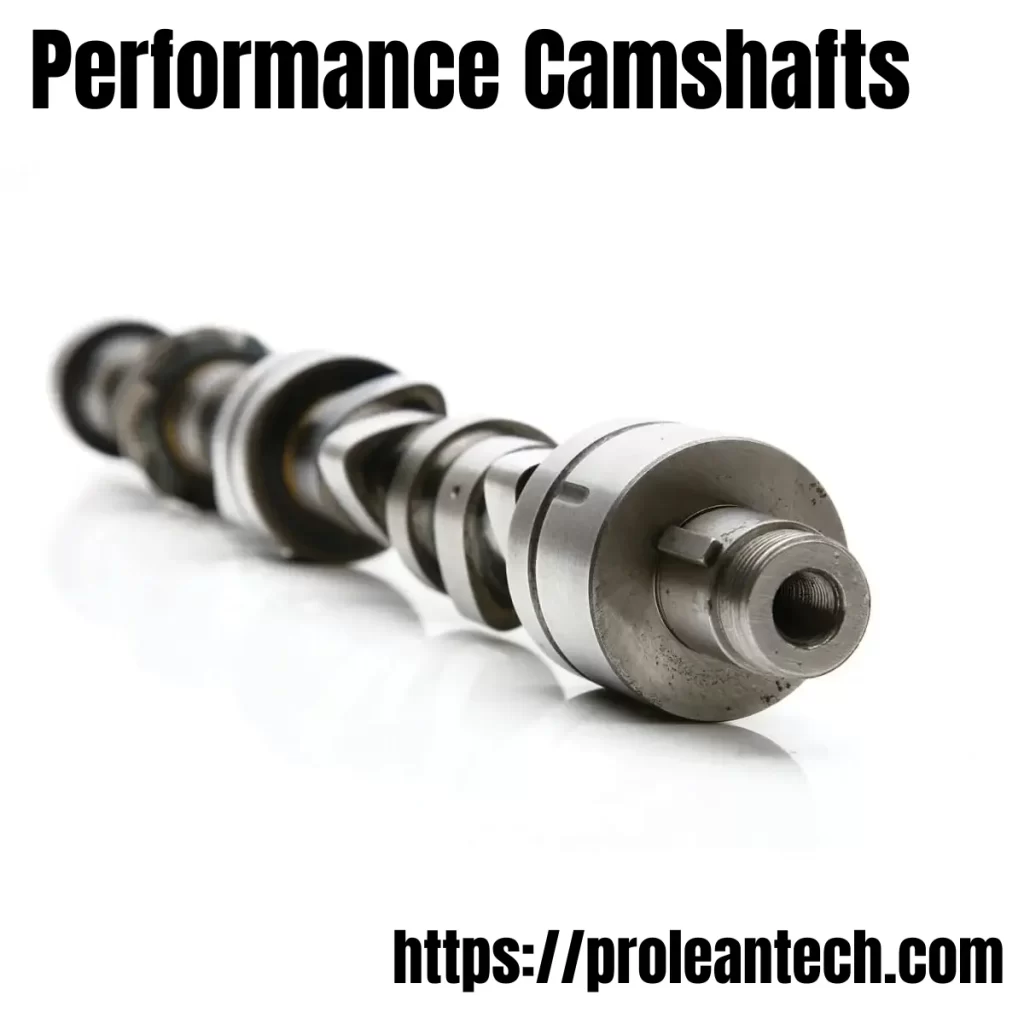
Performance Camshafts
If you are looking for camshafts with more aggressive cam profiles than stock camshafts that give surety to increase the engine’s power output at higher rpm, then performance camshafts are ideal for you.
Performance camshaft is the type of camshaft that gives you performance and ensures excellent output in the sense of high performance by giving high RPMs for engines for which you need this feature.
This type of camshaft is used in engines like racing & sports car engines and in those engines designed for higher horsepower and for producing higher torque with greater efficiency and power.
8: Steel Billet Camshafts
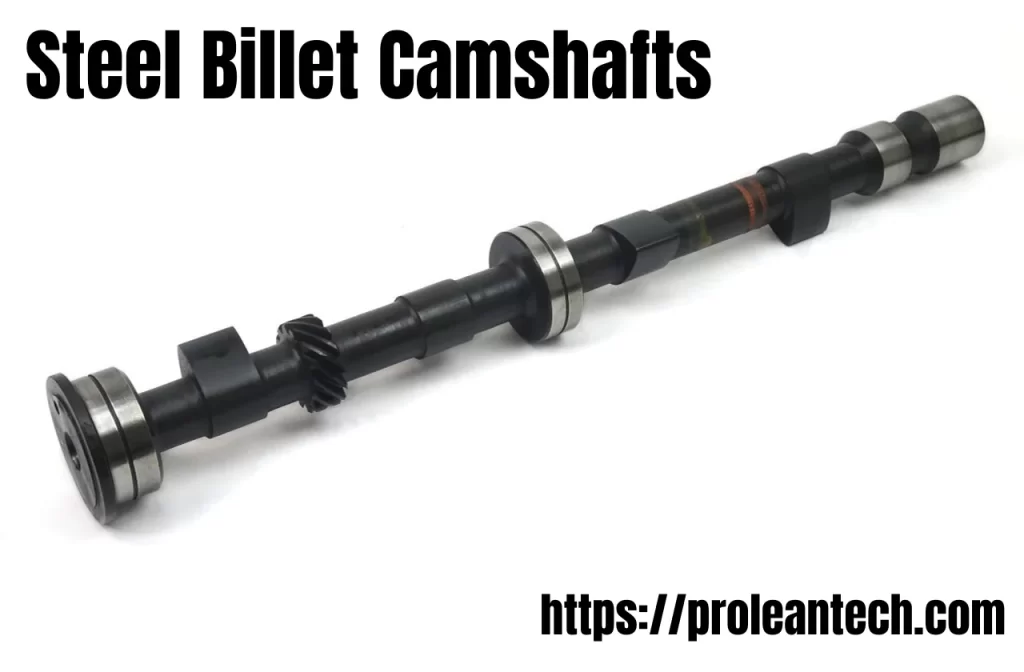
Steel Billet Camshafts
Steel Billet Camshafts are made up of forged steel, which offers strength, durability, and precision. These camshafts are used where you need precise control, especially on the camshafts.
Steel billet camshafts are considered one of the most valid and high-quality camshafts. These are the camshaft types used mainly by and the most demanded camshaft type by our clients who need precision and strength for their engines. These factors are crucial for success.
Try Prolean Now!
Materials for Camshaft Manufacturing: Choosing the Right Material for Your Industry Needs
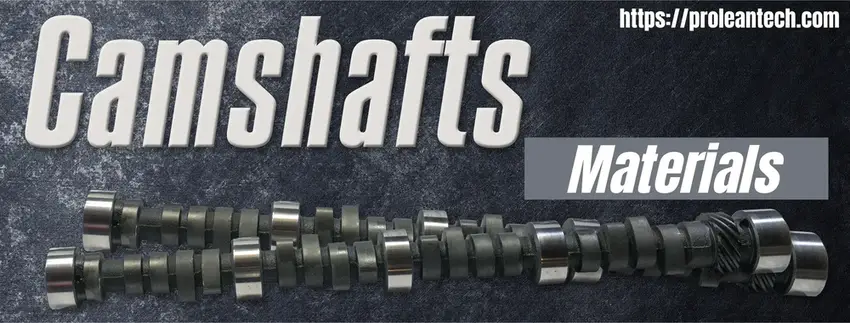
Camshafts Materials
Suppose you are a small business owner and need the camshafts to balance the quality of the material by staying within your budget. In that case, ProleanTech experts suggest you go with steel or chromoly material that offers to balance both factors at the same time.
Titanium and billet steel are materials recommended for those engines where weight reduction and precision insurance are required at the same time. Cast iron is the material that ensures the reliability of long-lasting wear resistance for camshafts.
And if you need camshafts for equipment that works on a lightweight and low performance, aluminum is recommended for camshafts, which will also reduce the budget factor.
ProleanTech also provides you with the best consultation for choosing the best material for your industry needs because our engineers are highly skilled and know the best need of the equipment for your industry’s best performance by ensuring the equipment is within your budget and time limit.
We are also offering the making of your equipment within one day and with the possibility of delivering your camshafts and all other custom-manufactured industry equipment while ensuring the international standards of ISO, as ProleanTech has the ISO 9001:2015 certification.
Manufacturing Camshafts for Small Businesses: Methods and Solutions
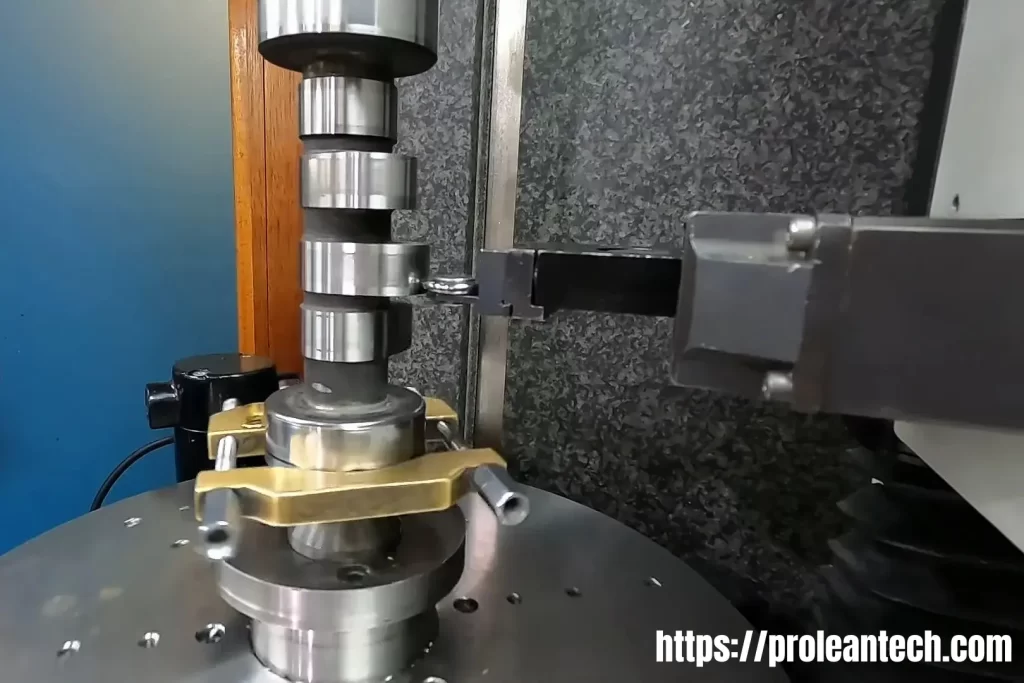
Camshaft Manufacturing
There are three significant methods for manufacturing camshafts: casting, CNC machining, and steel forgings. Here, we discuss the two most crucial types for your industry success.
1: Casting
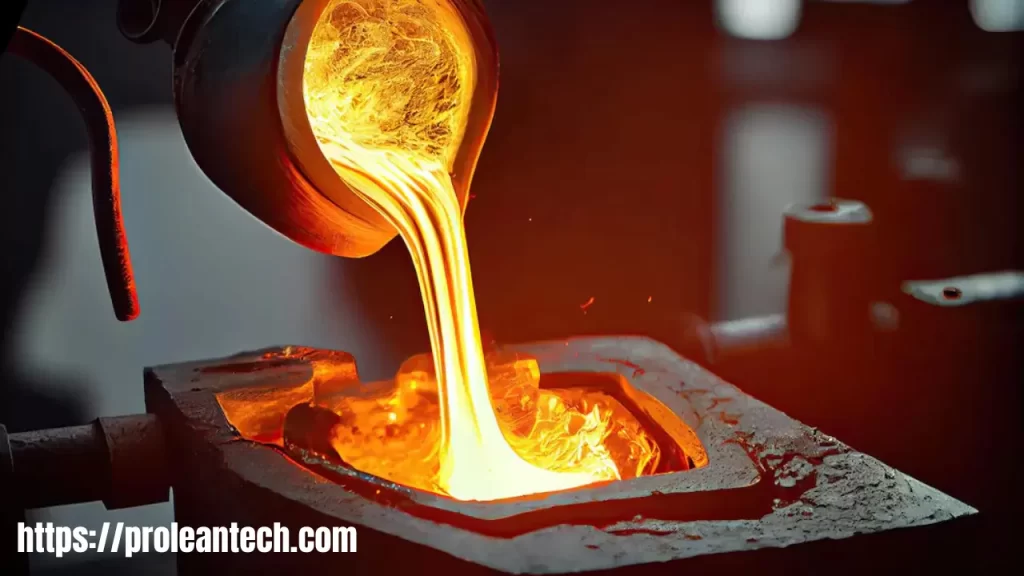
Camshaft Manufacturing from Casting
Casting is a process of manufacturing the camshafts first by melting the metal, and after it melts, it is put into the die, and in the die, we allow it to be cooled down. In this process, chilled cast iron is the basic material used to manufacture the camshafts.
Some additional materials like copper, nickel, vanadium, and molybdenum are also added to it. There are further many types of casting:
1: Die Casting
Now, if you want to know which type of casting will be suitable for your industry’s success, then we have a proper team of skilled engineers with excellent skills in making camshafts, and those know better than you about the industry, so don’t be late. Contact Us Now!
2: CNC Machining
This is one of the latest technologies that involve computer-controlled equipment that is responsible for cutting the materials from different sides and angles and for making the final product by ensuring the factor of precision and accuracy of the final product like camshafts in very little time by ensuring the occurrence of significantly less chance of human error in the process of making of the final product.
We also provide you with the best CNC machining service to make your custom parts, including the camshafts, with the possibility of making your camshafts and other industry material within one day and with the delivery possibility across 30+ countries.
Try Prolean Now!
Conclusion: Why to Choose ProleanTech As Your Ideal Camshaft Manufacturing Partner
ProleanTech gives you the surety of speed, precision, and expertise while manufacturing your industry custom parts with the certification of ISO 9001:2015. With the possibility of shipping across 30+ countries, we can make equipment for your industry’s rapid success within 1 day by ensuring the reduction of human error in the final product.
So don’t look anywhere while we are here. Book your 1:1 consultation call by talking to our industry experts and getting a quote for your business now!
FAQs: Key Camshaft and Crankshaft Questions Answered
What is the difference between a camshaft and a crankshaft, and does a relationship exist between them?
The main difference between a camshaft and a crankshaft is that the camshaft is responsible for the opening and closing of the intake and exhaust valves in a combustion engine, and the crankshaft is responsible for the movement of the piston with the help of the rod.
Yes, a camshaft and a crankshaft are closely associated components of an engine. The crankshaft drives the camshaft, which regulates when the engine valves open and close. They also cooperate to guarantee correct combustion throughout the engine cycle.
What are the two gears that operate the camshaft?
Cam and crank gears are the two gears responsible for operating the camshaft.
What is the most common type of cam?
Disc or plate cam is the most common type of cam.
What are the applications of a camshaft?
Automotive engines, industrial engines, aircraft engines, marine engines, power generators, robotics, and the textile industry are some applications of camshafts. Overall, they are used in piston engines, mechanically controlled ignition systems, & motor speed controllers that are electric.
Can you run an engine without a camshaft?
No, It’s not possible to run the combustion engine without camshafts.
What is the role of a camshaft in a car?
The camshaft performs its essential purpose in a car: opening and closing the exhaust and intake valves.
If you still have some questions related to our services, the procedure of our services, and the quality, here is a complete guide covering most of the FAQs in your mind.

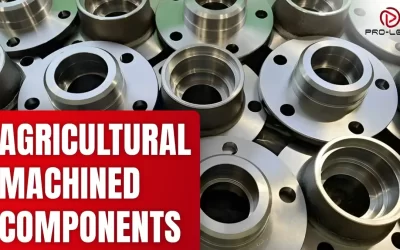
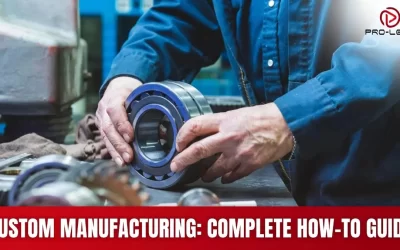

0 Comments